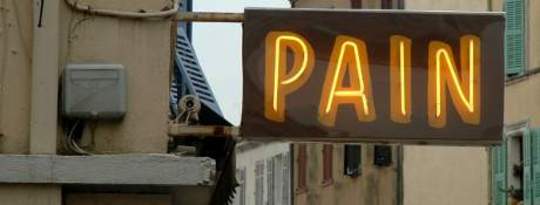
It may be that the pain, like an addiction, is so overwhelming that we feel out of control. We may, in fact, be unable to control the pain, but we do have a choice as to whether we move away from the pain or move towards it. We do not need to choose one way as always right and the other way as always wrong. One strategy may be best one day and the next day we might do the opposite.
When the pain is too much to handle, then some relief gives us space to rest and recuperate. But if we choose to numb our pain all the time, we can end up in a closed and lonely world. If we choose to face our pain, then we have the opportunity to understand its source and that helps us to be more compassionate towards others who experience pain. Taking a zealous attitude means we never give ourselves a break. We are propping up our egos rather than finding ways to heal the pain.
We need to consciously decide to mask our pain when the pain, for the moment, is too much. At the same time, we need to know that blocking pain does nothing to remove the source of that pain. If we can, then it is best to find ways to remove the pain altogether.
Finding Relief by Seeking Outside Help
Getting help from outside means getting help to relieve the immediate pain. We also need help to get to the source of the pain, whether the pain has a physical cause, because something is wrong with our bodies, or a mental cause.
Getting help from outside is one way of developing our wisdom minds. But at the same time, from our side we need to choose to be open to being helped and we need to choose to take the medicine, to change the way we do things. It also helps to apply some wisdom in choosing who to ask for help.
Dissociating from Pain
 We can get some distance from pain through blocking it or dissociating from it. We do this by concentrating intensely so that the awareness of pain cannot get through to our consciousness. Hypnosis is a good example of dissociation. If we allow ourselves to go into a hypnotic trance, then during the trance we are aware only of what is happening in our mind and totally unaware of things happening around us. It is even possible to have operations done under hypnosis without the use of any anesthetic.
We can get some distance from pain through blocking it or dissociating from it. We do this by concentrating intensely so that the awareness of pain cannot get through to our consciousness. Hypnosis is a good example of dissociation. If we allow ourselves to go into a hypnotic trance, then during the trance we are aware only of what is happening in our mind and totally unaware of things happening around us. It is even possible to have operations done under hypnosis without the use of any anesthetic.
There are many ways of keeping our mind so occupied that we are unaware of the pain. This happens because our mind is limited in what it can do, so if it is totally occupied with one thing, it can be totally unaware of anything else. Kids in front of the TV can be like that. They just do not hear their parents when they are called to dinner. Watching a good video, reading a good book, playing a musical instrument, weeding the garden, knitting . . . anything that does not require much in the way of a response from us can be used in this way. It is mindfulness put to good use. We decide that we are going to be mindful only of what we are doing and nothing else, including any pain.
Using the Mind & Blocking Pain
A student in a workshop told me about her experience with blocking pain. She had to have a deep splinter removed from her foot and the wound stitched. The doctor advised anesthetics, but she refused because she had previously reacted badly to them. To block the pain she concentrated very strongly on a crack in the wall. Everything went well. She could feel that there was something happening to her foot, but she did not allow herself to identify with her foot. Then the nurse touched her and said, “Are you all right, dear?” At that moment the student lost her concentration and the pain came flooding back! She then had to concentrate even harder on the crack in the wall to stop herself from feeling the pain.
Training in self-hypnosis or mindfulness can be helpful in moving away from pain. Strong mindfulness, say, of a pleasant breeze, means less space in the mind to be aware of pain. It is important to remember that moving away from pain should never be your main strategy for dealing with pain. We actually need pain to tell us what is wrong. We move away from pain to give us a break when the pain has become too much.
 This article was excerpted with permission from the book:
This article was excerpted with permission from the book:
Enough! A Buddhist Approach to Finding Release from Addictive Patterns
by Chönyi Taylor.
Reprinted with permission of the publisher, Snow Lion Press. ©2010. www.snowlionpub.com.
Click here for more info and/or to order this book.
About the Author

Chönyi Taylor (Dr. Diana Taylor) was ordained as a Buddhist nun by the Dalai Lama in 1995. Active in the worlds of both Buddhism and Western psychology, she teaches Buddhism from simple to advanced levels and participates in interfaith conferences and workshops for psychologists and health professionals. She is currently a lecturer and supervisor in the Graduate Diploma Program in Buddhism and Psychotherapy for the Australian Association of Buddhist Counselors and Psychotherapists and is an honorary lecturer in Psychological Medicine at Sydney University. You may visit her website at www.chonyitaylor.com




























